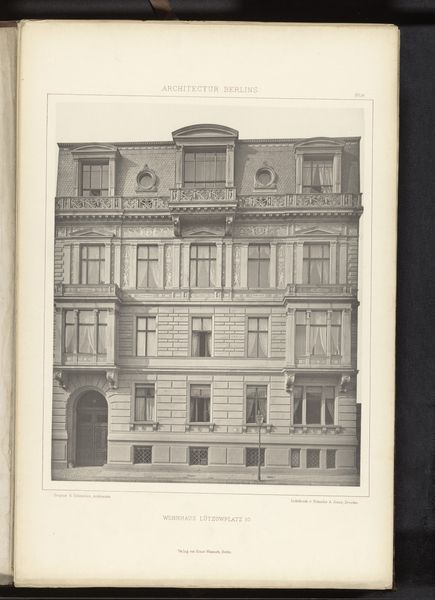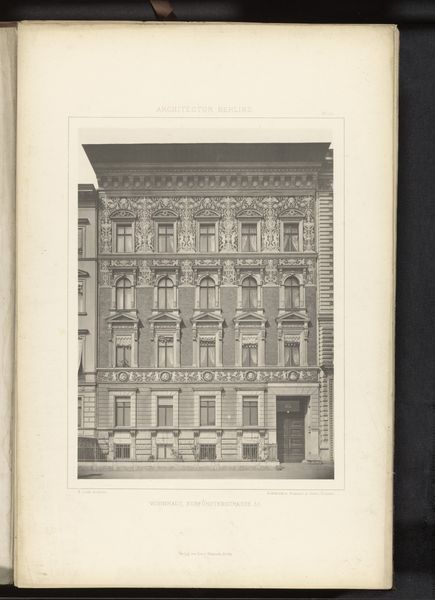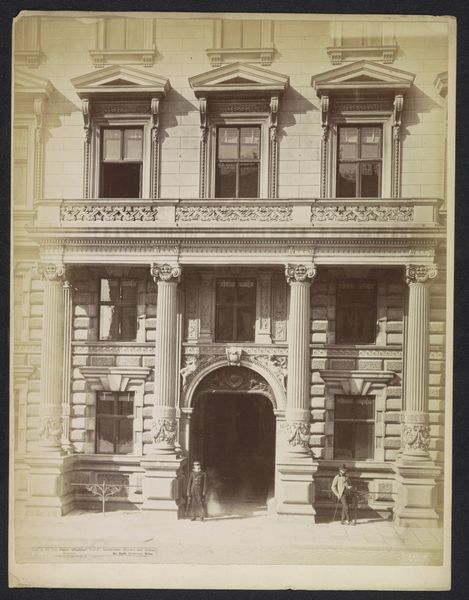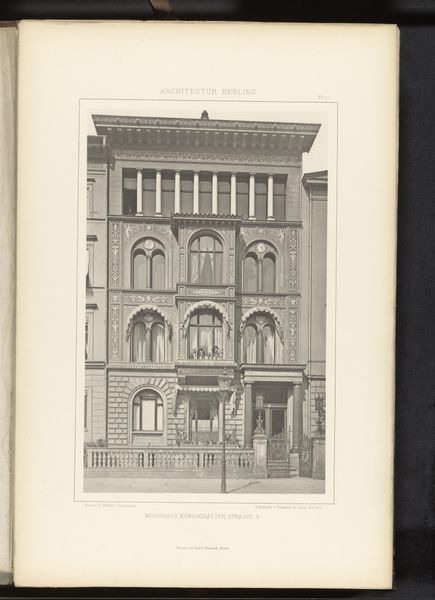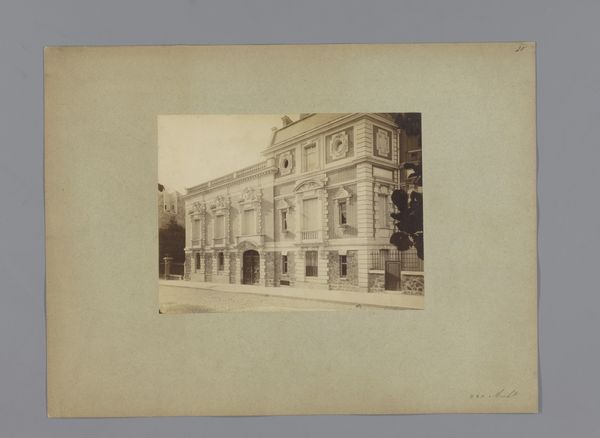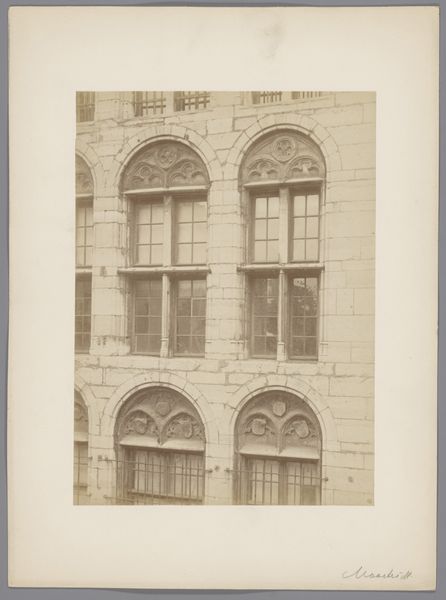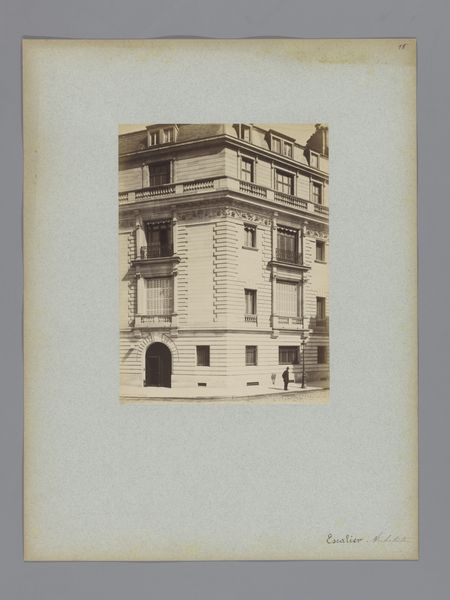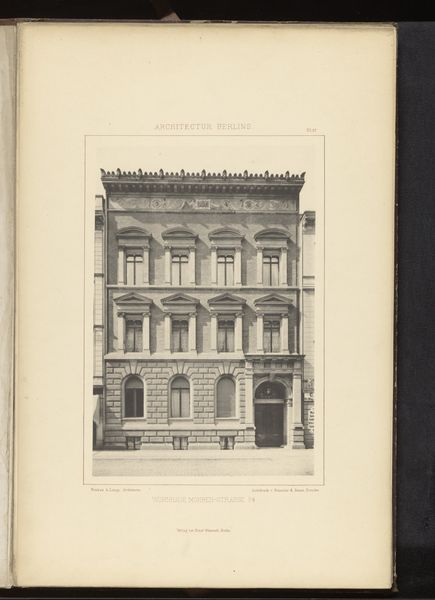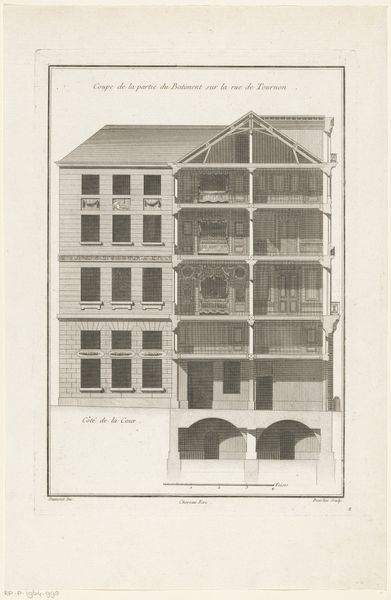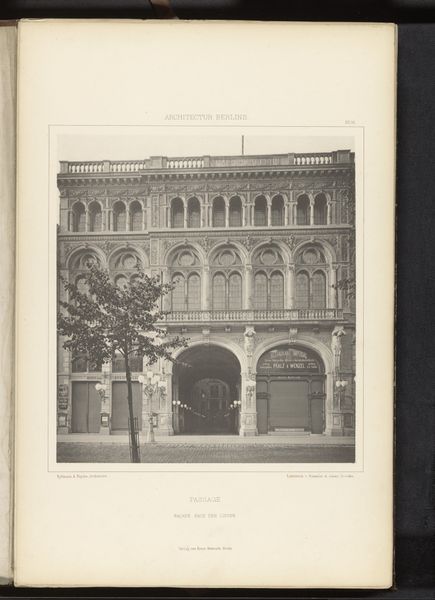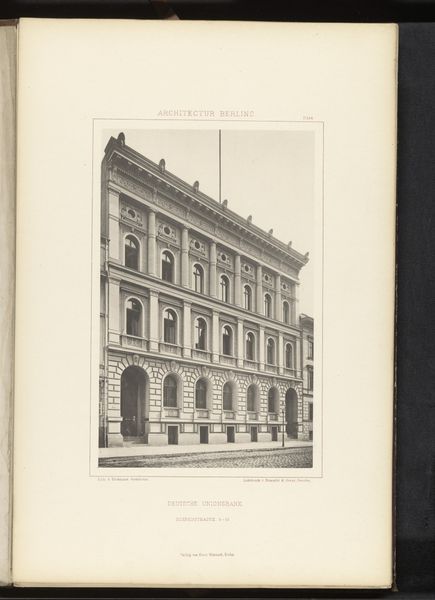
photography, albumen-print
#
landscape
#
photography
#
cityscape
#
italian-renaissance
#
albumen-print
#
realism
Dimensions: height 165 mm, width 110 mm
Copyright: Rijks Museum: Open Domain
Editor: It's melancholic, this image. There's a weight to it, a sense of bygone eras settling like dust. Curator: We are looking at an albumen print, a photographic work from between 1850 and 1900. It depicts the Palazzo Negrone in Genoa, rendered by Celestino Degoix. Editor: The closed shutters amplify the melancholy. It almost feels secretive. Are they hiding something? Symbolically speaking, shut windows often suggest hidden potential, things deliberately kept out of sight. What was life like behind those facades? Curator: The repeating patterns of the windows, their uniform size and spacing, give a strong sense of order. See how Degoix meticulously captured the facade's intricate detail and its clear linear qualities? There is beauty in the exactitude and symmetry here. Editor: Yes, but the slightly softened focus softens also that sense of order. I find myself wondering, does the building itself possess some kind of spiritual presence or collective memory? Italian architecture, and especially palazzos, often become symbols of power, status, and perhaps even societal burdens over time. Curator: Structurally, note how the converging lines of the street emphasize the monumentality of the building. It directs your eye upward, highlighting the architecture as the focal point. Editor: I see those lines as almost prison bars, drawing the building into a perspective trap of social significance. This perspective reminds me that, historically, powerful families would essentially inscribe themselves into the cityscape in imposing constructions such as this one. It’s like visual code! Curator: Indeed, the way the light interacts with the textured surface provides subtle tonal gradations. The artist also expertly utilizes this effect in contrasting light against shadow, accentuating the play of the planes and volumes. Editor: It's strange. Usually architectural photography emphasizes aspiration, growth, or progress. Yet the subdued lighting casts a subdued light on this magnificent building and makes me contemplate themes of power and their slow decline. It is interesting, isn't it, how much an image’s cultural interpretation relies on lighting and photographic qualities, instead of on a singular visual meaning? Curator: I concur. It seems that an analysis of visual order combined with historical perspectives has enriched our reading of this work. Editor: Yes, seeing these buildings as both forms and archives, is a lesson I shall continue to ponder after we move on from this exhibit.
Comments
No comments
Be the first to comment and join the conversation on the ultimate creative platform.

